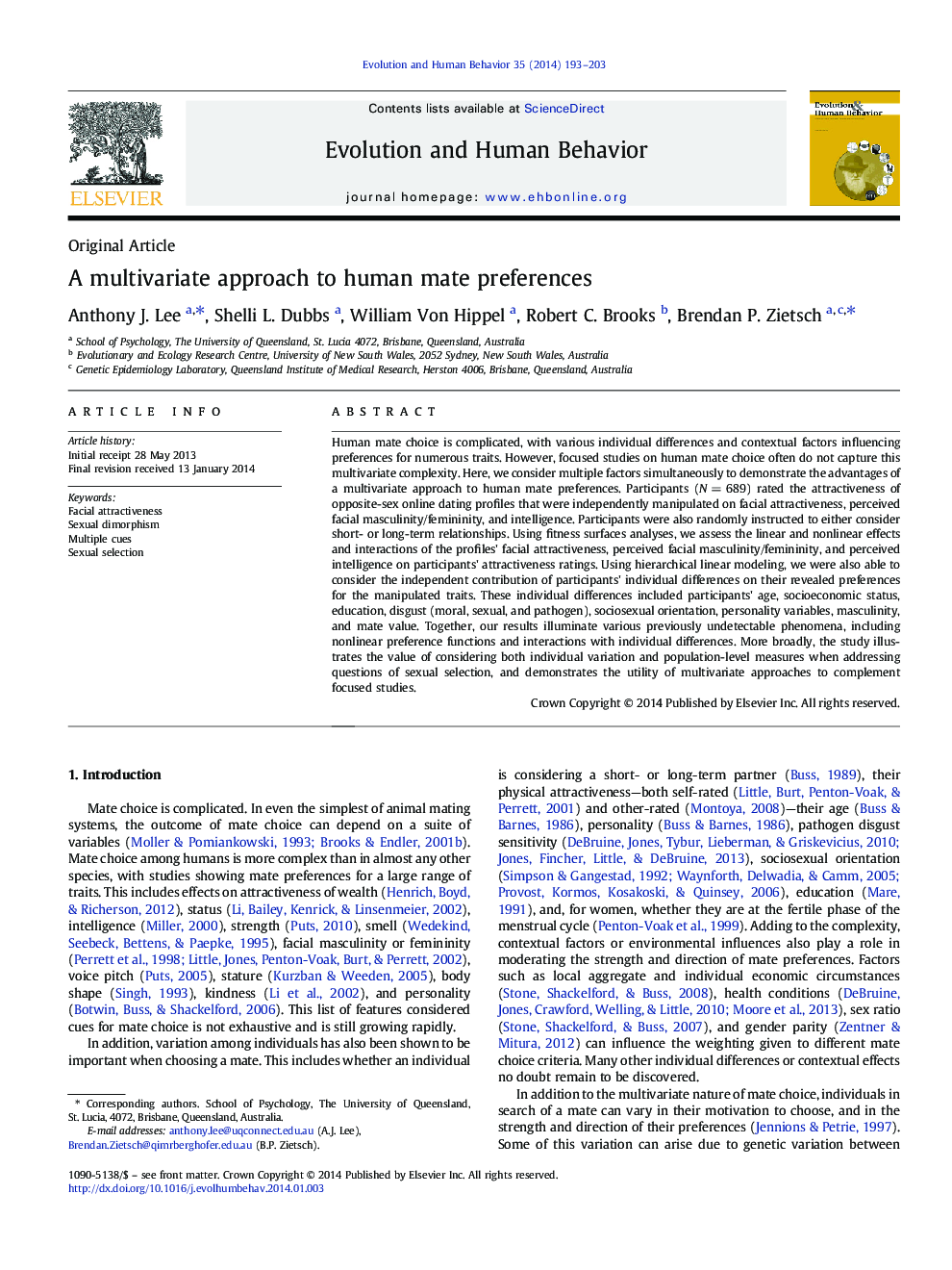| Article ID | Journal | Published Year | Pages | File Type |
|---|---|---|---|---|
| 10464065 | Evolution and Human Behavior | 2014 | 11 Pages |
Abstract
Human mate choice is complicated, with various individual differences and contextual factors influencing preferences for numerous traits. However, focused studies on human mate choice often do not capture this multivariate complexity. Here, we consider multiple factors simultaneously to demonstrate the advantages of a multivariate approach to human mate preferences. Participants (NÂ =Â 689) rated the attractiveness of opposite-sex online dating profiles that were independently manipulated on facial attractiveness, perceived facial masculinity/femininity, and intelligence. Participants were also randomly instructed to either consider short- or long-term relationships. Using fitness surfaces analyses, we assess the linear and nonlinear effects and interactions of the profiles' facial attractiveness, perceived facial masculinity/femininity, and perceived intelligence on participants' attractiveness ratings. Using hierarchical linear modeling, we were also able to consider the independent contribution of participants' individual differences on their revealed preferences for the manipulated traits. These individual differences included participants' age, socioeconomic status, education, disgust (moral, sexual, and pathogen), sociosexual orientation, personality variables, masculinity, and mate value. Together, our results illuminate various previously undetectable phenomena, including nonlinear preference functions and interactions with individual differences. More broadly, the study illustrates the value of considering both individual variation and population-level measures when addressing questions of sexual selection, and demonstrates the utility of multivariate approaches to complement focused studies.
Related Topics
Life Sciences
Agricultural and Biological Sciences
Ecology, Evolution, Behavior and Systematics
Authors
Anthony J. Lee, Shelli L. Dubbs, William Von Hippel, Robert C. Brooks, Brendan P. Zietsch,
